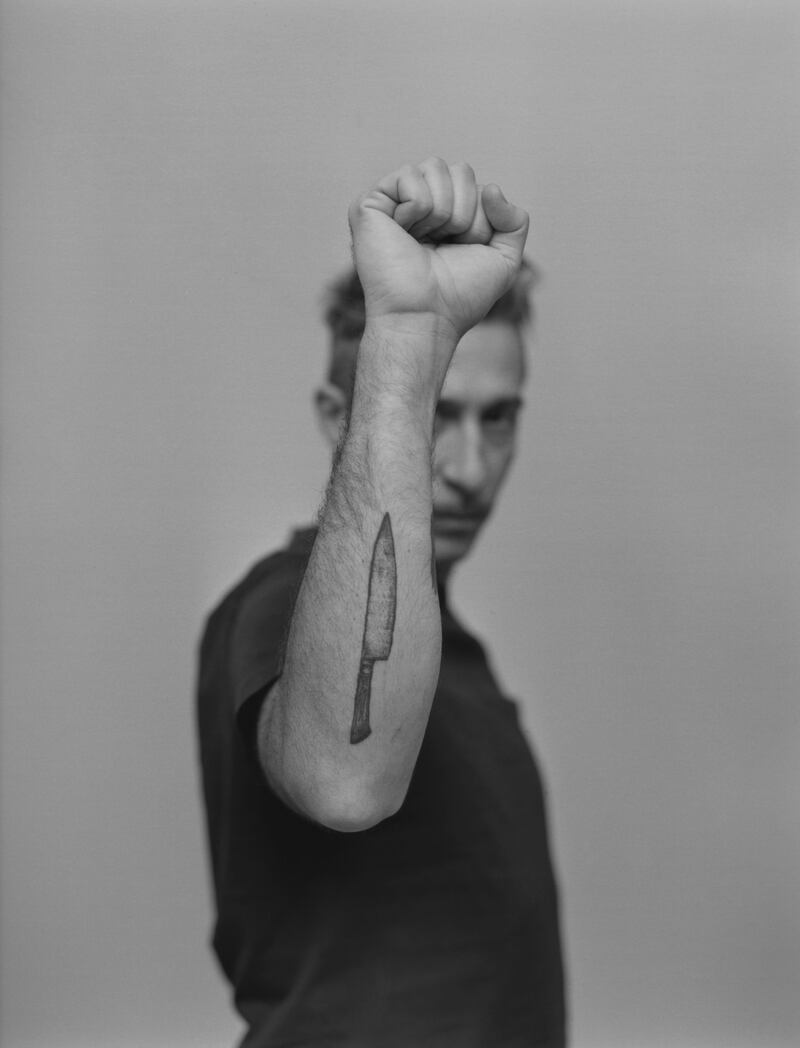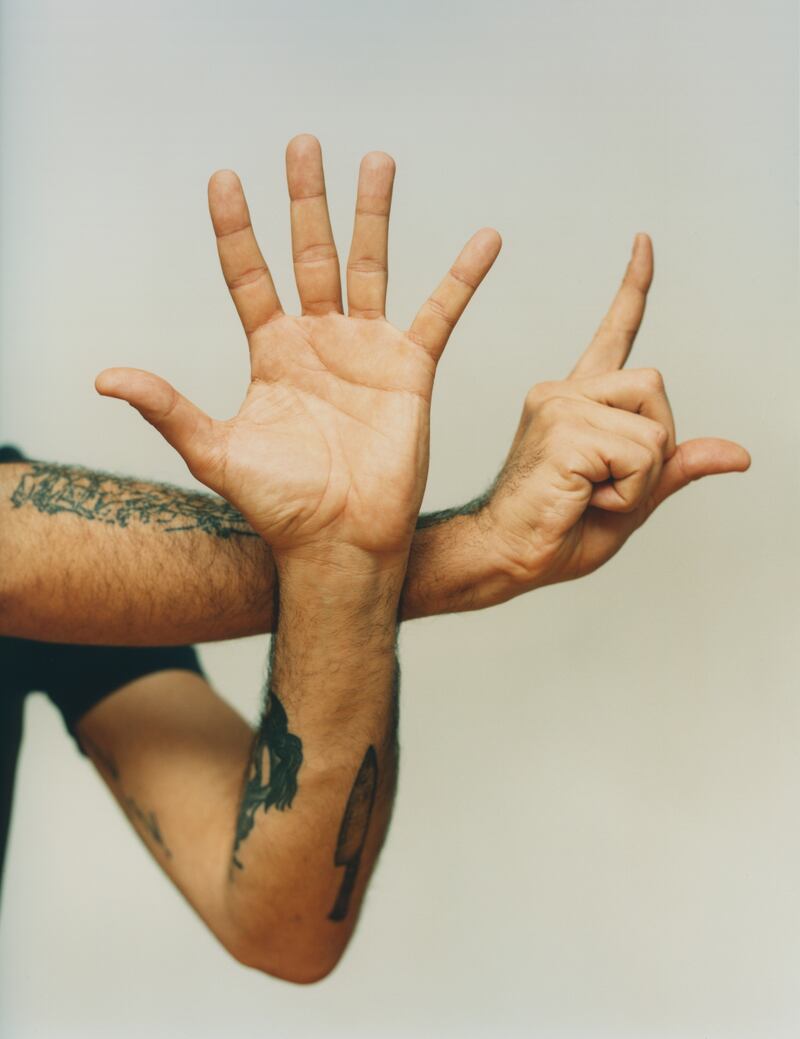Philosophy and dance don’t often intersect; the logical-thinking mind tends to avoid the instinctive unthinking body. But for the French choreographer Noé Soulier they have similarities, and the self-reflection found in philosophy appears throughout his dances.
“Actually, dance and philosophy have a lot in common,” he says, by phone from Belfast, where he is the featured artist at Belfast International Arts Festival. “In general, we don’t pay so much attention to our own body. I’m talking, but not paying attention to the movement of my lips and my tongue. But when I’m dancing, my own movement and body become the centre of my attention. So there is reflectivity involved in dancing that targets your movement and body. Equally, in philosophy, we are very conscious of ourselves, so self-reflective thinking and actions are very present.”
The ballet vocabulary is quite resilient, so you can put almost any step after any other step and it will look acceptable
After his training at National Ballet of Canada and Parts in Brussels, Soulier earned a master’s degree in philosophy at the Sorbonne. His early dance creations sought to interrogate accepted ballet history and norms. In Kingdom of Shades, which was performed last week at the Belfast festival, he seeks to disrupt the inner logic of ballet vocabulary.
“I took the existing syntax and tried to rearrange it,” he says. Rather than combining steps based on existing conventions, he assembled them randomly in alphabetical order, for example “arabesque”, “attitude”, “assemblé”.
A middle-class millennial at a Kneecap gig: am I just cosplaying at republicanism?
What should I do if my electric car breaks down?
Matt Williams: In cynical times, savour the new coaches who want to make the world a bit better
Political stupidity of Fianna Fáil four could see Ireland end up with a bottom-of-the-barrel job in Europe
“When I did this I was disappointed, because it didn’t look too strange. The ballet vocabulary is quite resilient, so you can put almost any step after any other step and it will look acceptable. So the experiment moved to picking only preparation steps, like the steps that you do in order to prepare for a turn or a jump.” With these preparatory steps stripped of their conclusion, Soulier reveals the binding between the turns and jumps. In doing so he creates somewhat disconcerting yet intriguing sequences where the dancer is always going toward something that never takes place.

Working with Vincent Chaillet, a premier danseur with Ballet de l’Opéra National de Paris when Kingdom of Shades was created in 2019, they had to figure out sequences like puzzles. Chaillet’s role was not as a passive dancer who followed the choreographer’s instructions, a common occurrence in the ballet world. Rather, he was a co-researcher finding ways to combine steps that did not organically follow one after the other.
More recently, Soulier has turned to everyday movements as the building blocks for his choreography. In Fragments, a dance film available on demand during the Belfast arts festival, he is creating movement that is based on everyday actions, such as hitting an imaginary object with different body parts.
The audience do not see the ordinariness of the actions, because the context is removed. So now each movement is like a building block that is separate from its original intention.
“I feel like a lot of literature has been trying to do that. Writers like James Joyce were trying to break away from the conventions of story.” Just as writers free language from narrative, so does Soulier free movement from the meaning of a gesture like hitting.
Creating a dance film was a necessity due to restrictions during the Covid epidemic, but Soulier enjoyed the possibility to control the viewer’s eye.
“Even in a theatre the angle by which people see the movement is quite different depending on where they are sitting. In filming Fragments, we constructed a frame that was placed between the camera and the dancer. It was quite small and never showed the whole body, but concentrated on the middle of the body, like the ribcage and hip area. We had complete control as to what part of the body was shown in this frame and the dancers could layer and hide each other in ways that you cannot do onstage.”

Soulier has placed dancers in frames, but also placed art onstage. Performing Art was created in 2007 for the Pompidou Centre and featured no dancers, just art handlers hanging paintings and assembling sculptures from the centre’s collection.
“I was reacting to a trend where dance was presented in museums. For me, it is a setting where we see objects and I felt that dancers performing in museums were also being objectified, especially in those durational performances that go on for hours and the audience can come and go. The dancer is constantly available, just like an object is constantly available.
“In the theatre we share not only the same space, but the same time. And this sharing of time together is quite precious, so I thought that it would be interesting [to] create the shared experience viewing art. I selected 20 works from the Pompidou Centre’s collection and created a performance where these works were installed onstage in the centre’s theatre by professional arts handlers. Because the art handlers’ work was real, there was no acting or theatrical pretence. The movements on stage were real, so the choreography just involved the selection of works and the order on which they came onstage.”
One of the pieces is a vacuum cleaner and it was treated the same way as a Caravaggio
Performing Art revealed aspects of the chosen artwork not experienced in a gallery. The audience had a specific time to view each work, which was usually longer than they would give a work in the museum. In seeing pieces of sculpture assembled, they had insights impossible to receive just viewing the finished work. They also didn’t control the time, so once the work was taken off stage, it was gone.
Watching the art handlers also gave importance to each work. “One of the pieces is a vacuum cleaner and it was treated the same way as a Caravaggio. Overall, Performing Art played a lot on questions like: What is a museum? What is a theatre? How does the relationship between artwork and audience change in each setting?” Philosophical questions that Soulier continues to answer through dance.
Fragments is available on demand until November 6th






